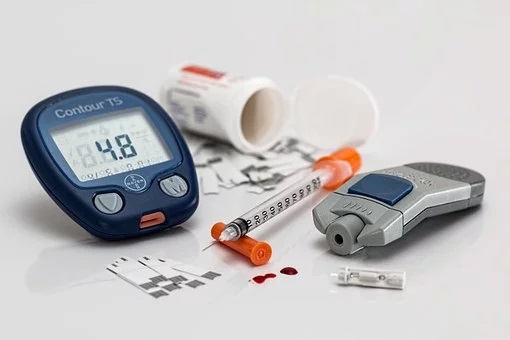
Diabetes affects students and teachers lives alike
Around 21 million adults have diabetes in the United States alone. Junior Dylan Lancaster and history teacher Gina Glass are just two of those 21 million.
While people think that the disease is easy to manage, it is something that has become a way of life for both Lancaster and Glass.
“Living with diabetes is very hard,” Lancaster said. “It is a lot of management and watching what you eat. If you however do not watch what you eat, it is a lot of damage control.”
Eating something as simple as a bag of jelly beans and not giving insulin can cause any given diabetic to lose a few hours over it. This can cause one to have high blood sugar, which can restrict the things they do such as driving.
Both Lancaster and Glass have had diabetes from a fairly young age. This has helped them get into the habit of making sure they do what they need to do to enjoy all those little things they enjoy to eat. However, because Glass is older than Lancaster it has made her experience with diabetes somewhat different from what Lancaster has experienced.
“I found out I had diabetes when I was 12,” Glass said. “There was zero diet drinks, no Splenda and things like that when I was that age. So, I really had to watch what I ate at the time.”
Because diabetes can cause you to have very high or very low blood sugar, things such as birthday cake or ice cream were something that Glass could not enjoy. However, with the invention of conveniences such as insulin pumps, people can enjoy more things than before they came around.
Before having the convenience of the insulin pump, Glass had to stick to a strict schedule of when she took her insulin. She normally took one shot in the morning and one at night. With those two shots, she also had to take one every time she ate something. This in turn could result in her actually having seven or eight in one day. However, with the modern technologies at hand she can change out her insulin around every two to three days. She can also give herself the right amount of insulin with the simple push of a button. This decreases her shot rate from seven to eight times a day to just one shot every three days.
“I found out that I had diabetes when I was 5- years-old,” Lancaster said. “I do not remember much more than the fact that I was happy that I was out of school for a week.”
Lancaster says that for himself and his family, it did come as a shock. They were unsure why he had diabetes but knew that they would do what they could to help in managing it. It took time for not only Lancaster, but also his family, to adjust to this game changer. He learned a lot about the disease from his parents extensive research the did on it.
“When it comes to what I eat and drink, I try not to have things with a lot of sugar in them, so my blood sugar does get too high,” Glass said. “Thankfully, I have great self-control. If I decided to have an oreo or doughnut, I can easily limit myself to just one.”
Even though Glass does practice self-control, she still has to check how much sugar or carbs things she consumes. This helps her know how much insulin she needs. However, when she was younger she sometimes did not have the luxury of having whatever she wanted to eat.
“When I was younger, I could not enjoy the ‘good cereal’ as some would call it,” Glass said. “I instead have to have plain rice krispies, cheerios or other boring things. So, the 12-year-old me was always a bit bummed over this small inconvenience.”
